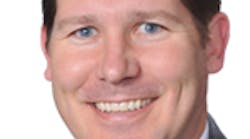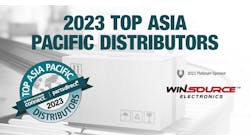At the annual Consumer Electronics Show (CES), attendees and press tend to focus on the really intriguing demonstrations, innovative solution packages, and sheer number of just plain cool products. But once that thrill has worn off, what do we really learn from CES—from the perspective of the distribution channel and semiconductor supply chain? CES isn't, after all, a midstream channel event, but it does give a real sense of where market strategies for consumer electronics (CE) are headed for the coming year.
Communication Hub
Like last year, we again saw Qualcomm's strategy to go toe-to-toe with Intel in the connected/mobile space. Qualcomm's new CEO, Steve Mollenkopf, joined in leading keynote addresses, notably the keynote panel hosted by Ford, "How Mobile Is Fundamentally Changing our World." This is a very telling point; Qualcomm is decisively competing in the Smart Life space, from home to automotive and autonomous vehicles and drones, computing, WiFi, and connected devices for remote monitoring. The Internet of Everything (IoE) is truly the market that Qualcomm is looking to lead. The joint ventures and partnerships that Qualcomm has developed provide eminent showcases for their ability to not only provide leading communication and wireless networking chip solutions, but also to extend into the SoC to provide the power efficient and smaller footprint chip solutions to power IoE devices from the smallest wearables to larger vehicle solutions (whether drones or cars).
Driving Safety and Innovation in 2015
Automotive has been another area that continues to grow significantly in presence at CES every year. This year there were, again, more leading automotive OEMs each working closely with leading technology and solution partners to provide the latest in safety, driver assistance, and efficiency improvements for their cars. Today's vehicles are more and more differentiated by the technology solutions and improvements in addition to the traditional features. With everything from fuel efficiency to wireless charging and the "Connected Car" being offered in high-end through more modest models, the percentage of automotive semiconductor chips in cars is steadily increasing. Interestingly, while the safety and sensing components are highly ruggedized and specialized for automotive standards, the infotainment side of automotive semi is now in competition with traditional CE devices for components.
Volume is an issue for automotive OEMs when it comes to pricing negotiation for automotive infotainment components. With the latest Gartner data forecasting 250 million connected vehicles, the automotive semi market is certainly going to continue to grow in numbers and diversity of components. That market opportunity was certainly on display at CES 2015, with all of the major automotive OEMs partnering with various component manufacturers and solution providers. The connected car was very much front and center in Hall 2, and the new features coming out for improving drivers' ability to safely interact with their car as well as to wirelessly charge on-board devices, are going to continue to drive demand for automotive purchases, just as we saw last year.
What toWear?
No doubt about it, wearables has boomed and will be a major CE category in 2015 and beyond. But while this category certainly got bigger in number of exhibitors, devices, market applications, and so forth, what exactly changed since last year? It seems that for one, just about anything you put on is categorized as a wearable. That’s fine, but it doesn't necessarily mean that the device category has truly expanded from an industry perspective—more from a marketing perspective. After all, headphones and watches have been around for many decades and we've worn them. That's not to say that there weren't many new, high-tech tweaks to these devices at CES, but I think we have to realize that wearables is a category that is exploding also because of rebranding. There will be more to come and new features, capabilities, and interoperability will increase, likely during the year, but we should realize, as seen at CES, that there still is a long way to go in this category.
Not to downplay the true growth story here, but one important aspect of wearables as a category is the opportunity in the health and fitness market, in particular. This is where the most innovative and immediate opportunities for new solutions and device forms are right now. Real-time monitoring of health and vital statistics with real-time updates for remote patient monitoring is a real breakthrough for patients who can be at home instead of the hospital and for health care providers who can monitor recovery or chronic conditions through highly reliable data collection and direct reporting. Similarly, sports and fitness opportunities at the CE and professional sports level are gaining momentum. Consider Panasonic and SAP's Real-Time Sports Analytics System that tracked players and the ball in action on the field. For the professional or just the serious athlete, this use of wearable technology (sewn in the clothing and embedded in the ball) provides new insight into team dynamics, strategic plays, and individual improvement possibilities by having a truly 3D view of the game and every possible statistic regarding plays, distances, passes, and plays made or missed.
Though these latter innovations represent the lighter CE side of CES, taken together, the three main categories of communication and connectivity to enable interoperability for SmartLife technologies coupled with automotive safety and connected car improvements plus the new personal/wearable device capabilities, there is much room for growth in 2015. Connected events, data, and devices is the major theme, leaving wide open the possibilities for chip designs through end-device OEMs to innovate and capture market attention and growth.
Traylor joined Smith in 1997 in North American Sales, where he developed front-line experience in customer support and electronic component trading. To further Smith's global expansion, Todd served as general manager of Smith's Amsterdam office and later managing director of Europe for Smith. Daily interaction with major computer manufacturers built Todd's expertise in CPUs and allowed him to transition to the role of Smith's first CPU commodity manager, where he focused on supporting Smith's global team and its customers with CPU market data and insight. Traylor is a 1991 graduate of Texas A&M University, where he earned his bachelor's degree in Business Management.









